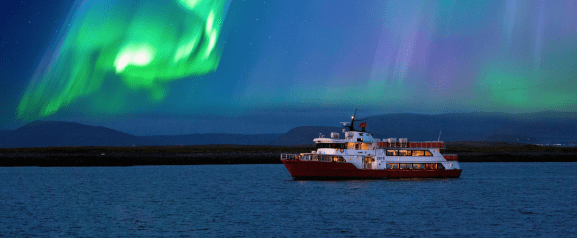What Are the Northern Lights?
The Northern Lights, or Aurora Borealis, are some of the most extraordinary natural phenomena on Earth. They occur when charged particles from the sun are carried by solar winds and collide with Earth’s magnetic field. These particles are drawn toward the magnetic poles, where they interact with gases in the atmosphere (mainly oxygen and nitrogen) producing light in various colours.
The colours of the aurora are determined by the type of gas and the altitude of the collision:
- Green (most common): Caused by oxygen molecules about 100 km above Earth.
- Red: Caused by oxygen at higher altitudes (above 200 km).
- Blue and Purple: Result from interactions with nitrogen.
Auroras occur in an oval-shaped region around the magnetic poles, known as the auroral zone. Iceland’s location within this zone makes it one of the best places to see them. The displays stretch from about 80 km (50 miles) to over 640 km (400 miles) above Earth’s surface, forming ribbons of light that dance and shimmer across the sky. During periods of heightened solar storms, known as coronal mass ejections (CMEs), the auroras become more vivid and expansive. This is why checking geomagnetic forecasts, such as the Kp index, is essential for predicting auroral activity.
When Can You See the Northern Lights in Iceland?
The aurora season in Iceland spans from September to mid-April, offering nearly eight months of potential sightings of the Northern Lights. However, the most optimal viewing opportunities occur during the darkest months of the year when the nights are the longest, and the reduced daylight hours create extended windows of complete darkness. While the aurora can occasionally be spotted as early as late August, the combination of dark skies, crisp winter air, and clear weather conditions during the peak season increases the likelihood of a spectacular light display.
The best time to see the Northern Lights in Iceland:
- Time of year: From September until mid-April.
- Time of Day: Generally between 20:00 and 02:00.
- Conditions: Look for clear skies and low light pollution. Rural areas and open spaces offer excellent viewing spots.
Keep in mind:
- Weather can change rapidly in Iceland. Use resources like the Icelandic Met Office for real-time weather and aurora forecasts.
- Patience is key. The lights can appear suddenly or not at all, even under perfect conditions.
Here are a few reliable websites that monitor activity levels, cloud cover, and other factors, making them useful to check before heading out.
University of Alaska Fairbanks
Understand the northern lights better and watch them in real-time. See the daily forecast of geomagnetic activity and check the long term Kp index forecast.
Icelandic Met Office
Stay up to date with the weather conditions and cloud cover to maximise your chances of sightings.
How to Photograph the Northern Lights:
Capturing the aurora on camera can be both a technical challenge and a deeply rewarding experience. The Northern Lights’ unpredictable movement, varying brightness, and the low-light conditions require a bit of preparation and the right techniques to achieve stunning results. Whether you’re a seasoned photographer or a beginner, the following tips will help you make the most of your opportunity and increase your chances of success:
Camera Settings:
- Manual mode.
- ISO: Start at 1600.
- Aperture: Use the lowest possible (f/2.8 or lower).
- Shutter speed: 10–20 seconds.
Gear:
- A wide-angle lens (10–20 mm) for capturing the expansive sky.
- A sturdy tripod to keep your camera stable.
- A remote shutter release or self-timer to avoid vibrations.
Take test shots and adjust settings as needed. The aurora’s brightness and movement can vary, so experiment with different shutter speeds and ISO levels.
Elding recommendation: While capturing the lights on a moving boat is more challenging, it’s still possible with stabilisation gear and shorter shutter speeds. A lens with a low aperture (f/2.8 or lower) and a focal length between 10 - 30mm.
Northern Lights tours:
-
Preview Image
 Preview text
Preview textSail into Faxaflói bay, where Reykjavík's glittering cityscape meets the Northern Lights. A unique winter adventure that sails whenever conditions allow, giving you the best possible chance to enjoy the auroras and city skyline in comfort.
Duration2 HoursSeason:Season start datetoSeason end date -
Preview Image
 Preview textThis thrilling combo tour lets you witness two of Iceland’s greatest natural wonders - the majestic whales in their natural habitat and the ever enchanting northern lights dancing across the vast starry sky!Duration5:00 HoursSeason:Season start datetoSeason end date
Preview textThis thrilling combo tour lets you witness two of Iceland’s greatest natural wonders - the majestic whales in their natural habitat and the ever enchanting northern lights dancing across the vast starry sky!Duration5:00 HoursSeason:Season start datetoSeason end date
-
Preview Image
 Preview text
Preview textJoin this highly rated small group Northern Lights tour that includes complimentary photos, homemade hot chocolate and cinnamon buns!
Duration3-5 HoursSeason:Season start datetoSeason end date -
Preview Image
 Preview text
Preview textThe mesmerising Northern Lights is sight that will not be forgotten. It's simple; nothing says “Icelandic Winter” like the idea of hunting the Aurora Borealis.
Duration3 hrs.Season:Season start datetoSeason end date -
Preview Image
 Preview text
Preview textNorthern Lights Cruise including flexible Aurora Exhibition ticket - the perfect combination.
Duration4:00 HoursSeason:Season start datetoSeason end date -
Preview Image
 Preview text
Preview textEnjoy a 2 hr. Northern Lights Cruise from Reykjavík and a FlyOver Iceland experience in one package!
Duration3:00 HoursSeason:Season start datetoSeason end date -
Preview Image
 Preview text
Preview textThis Northern lights tour takes you out of Reykjavik city to the best places to see Northern lights swirling across the night sky in their fantastic shapes and colours.
Duration4 hrs.Season:Season start datetoSeason end date -
Preview Image
 Preview text
Preview textEnjoy a beautiful evening capturing the Northern Lights with a professional photographer guide. This is a small group bus tour of maximum 18 people!
Duration4 hrs.Season:Season start datetoSeason end date








